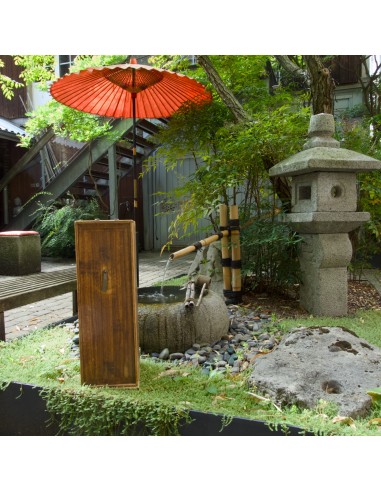Matcha Teezeremonie Set
Set for the Japanese tea ceremony. The items are stored and presented in a long wooden tea box (tanzaku chabako). Dimensions of the box: H 52cm x W 17cm x D 19cm. It has room for all the important tools: tea caddy (natsume), pot stand (futaoki), ladle (hishaku), tea bowl (chawan), fresh water pot (mizusashi), used water pot (kensui) and a bamboo whisk for frothing the tea (chasen). In addition, the small upper compartment contains a teaspoon (chashaku) and a tea towel (chakin) for wiping the tea bowl.
The tea ceremony, chanoyu or sado in Japanese, is the ceremonial preparation, presentation and serving of matcha. In the 12th century, with the beginning of green tea cultivation in Japan, it was first practiced in a meditative way by Buddhist monks. In the 16th century, it was perfected as a stylized art form by Sen no Rikyū, for whom special tea rooms (chashitsu) were built. To perform the tea ceremony, a few essential utensils are needed, as described above. Another important element is the charcoal-fired basin, called a furo in Japanese, with a tea kettle (furogama) used to heat water for green tea. Traditionally, the tea ceremony takes place in a specially designed tea room (chashitsu) and follows a strict ritual in which guests are first served a sweet and then the prepared tea. During the ceremony, the host and guests follow a set of clear rules and procedures. These include the guests turning the bowl of tea they have been given twice in their hands before drinking from it. The ceremony can last from 20 minutes to several hours, depending on its complexity.
























